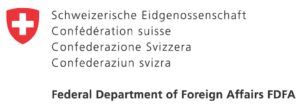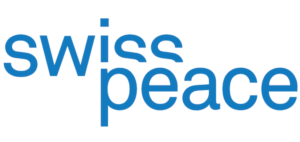There are many guides, tools and checklists already available to help you adopt more conflict-sensitive approaches. Each of these is designed for a different purpose and knowing where to start can be a struggle. This page presents a few ‘top picks’ to get you started and provide you with the inspiration to adapt your own tools tailored to your organisation, programming and context.
Please do reach out to your HQ or regional offices to check whether your organisation has developed its own tools or approaches tailored to your work! If you have any questions or need ad hoc support in applying these tools, feel free to submit a request via the online CSRF Helpdesk.
These tools are intended to identify strengths and weaknesses in adopting conflict-sensitive approaches. These tend to focus on organisational ‘hardware’ (i.e. policies, tools, systems), but it is important to also consider organisational ‘software’ (i.e. leadership, relationships, culture).
The ‘How To Guide to Conflict Sensitivity’ referenced above also includes a capacity assessment tool. This covers institutional commitment, policies/strategies, human resources, learning/knowledge management, project cycle, support services and external relations
There are two main analytical steps involved in conflict sensitivity analysis. First, there are conflict analysis tools designed to help you to deepen your understanding of the context. These are often structured around four main components – ‘profile’, ‘actors’, ‘conflict drivers’ and ‘dynamics’. Second, there are interaction analysis tools that look at the two-way interaction between the programme/operation and drivers of conflict. These help you to identify the risks of doing harm and opportunities to strengthen contributions to peace.
A common weakness with conflict sensitivity analysis is that it forgets one of these steps – either jumping straight to reflecting on risks/opportunities without carrying out a conflict analysis, or focusing too much on context analysis without being explicit about the risks/opportunities for programming. Here are some tools that cover both steps:
The CSC ‘How To Guide to Conflict Sensitivity’ – an excellent starting point that includes common participatory tools and frameworks for conflict analysis and considerations to inform interaction analysis at different stages of the programme cycle.
The CSRF ‘Contextualised Conflict Sensitivity Guidance for South Sudan’ – which includes questions to prompt reflection and includes examples and suggested resources specific to South Sudan designed to complement other available tools.
The ‘CDA Do No Harm Handbook’ – includes a seven-step framework for conducting conflict sensitivity analysis framed around identifying positive ‘connectors’ and negative ‘dividers’, and exploring how ‘resource transfers’ and ‘implicit ethical messages’ of aid can affect these. The title ‘Do No Harm’ can be misleading since CDA’s approach also encourages agencies to enhance contributions to peace. This is really conflict sensitivity!
There are many other resources available to help you integrate conflict sensitivity into your work. Check the dropdown for our honorable mentions.
The Saferworld ‘Gender Analysis of Conflict Toolkit’ – which includes practical FGD/PRA exercises to understand how conflict affects people of different genders, and how gender norms and other gendered factors can be a driver of peace and conflict.
The CARE ‘Benefit-Harms Handbook’ – which includes practical tools in the form of questions to prompt reflection on project’s possible unintended impacts.
The UK Stabilisation Unit’s ‘Conflict Sensitivity Tools and Guidance’ – which includes a several helpful checklists relating to proposal reviews, partner selection and M&E processes.
The UNICEF ‘Conflict Sensitivity and Peacebuilding Programming Guide’ – which includes annexes containing specific considerations and entry points for the education, health/nutrition, WASH, child protection, gender, ECD, youth and communication sectors.
The SCNAT has produced ‘Guidelines to Conflict Sensitive Research’ with clear reflection questions and recommendations relevant to analysts, researchers and evaluators.





